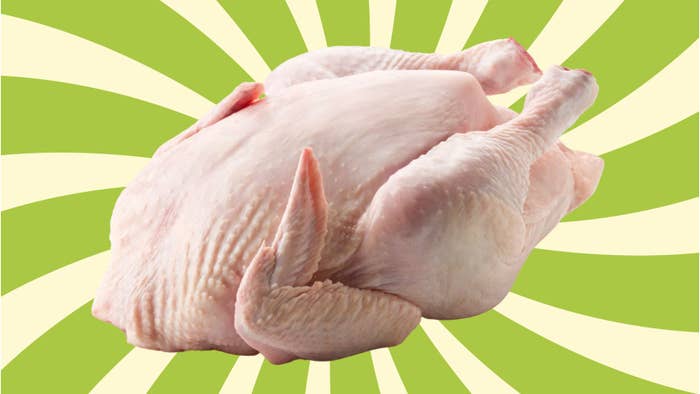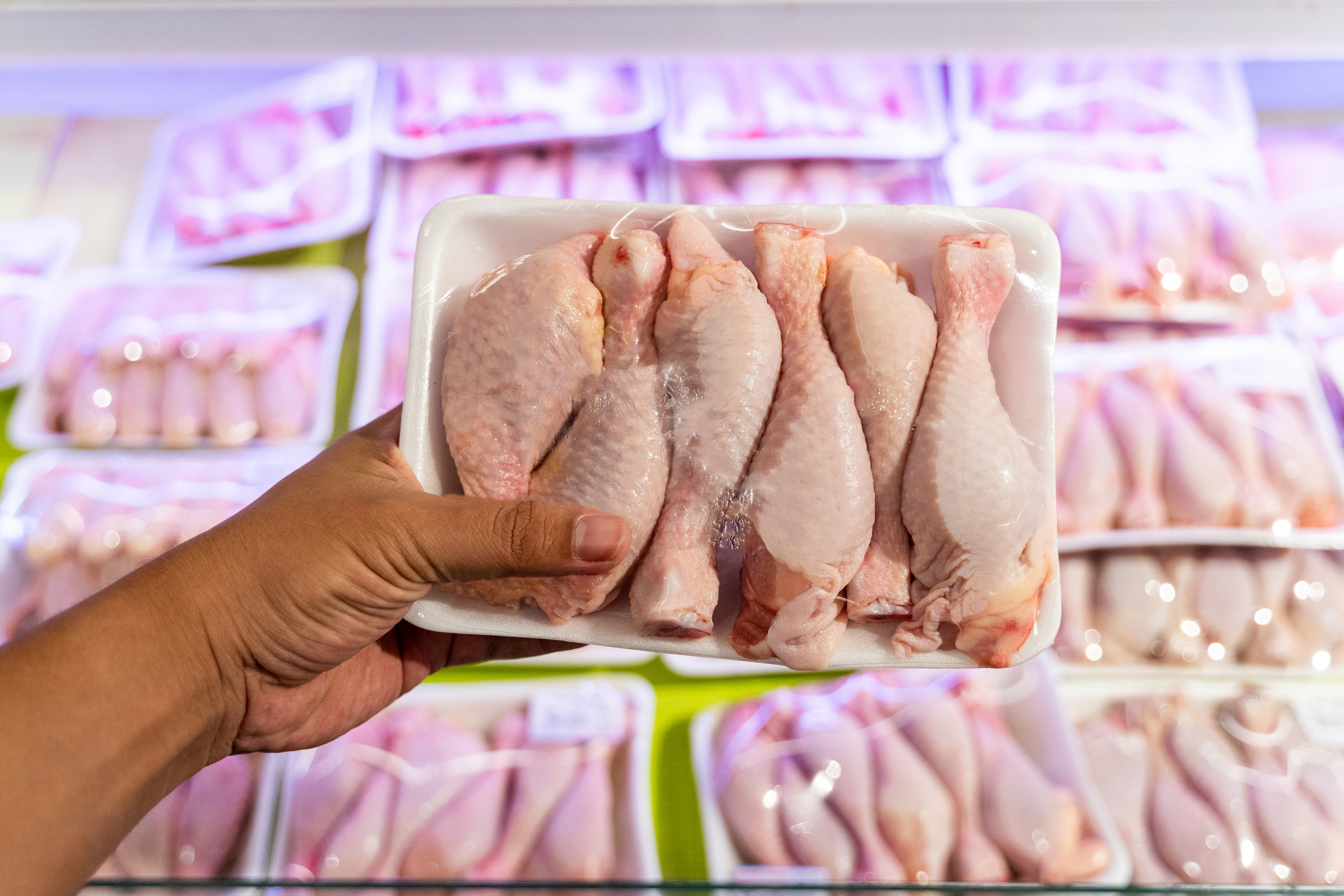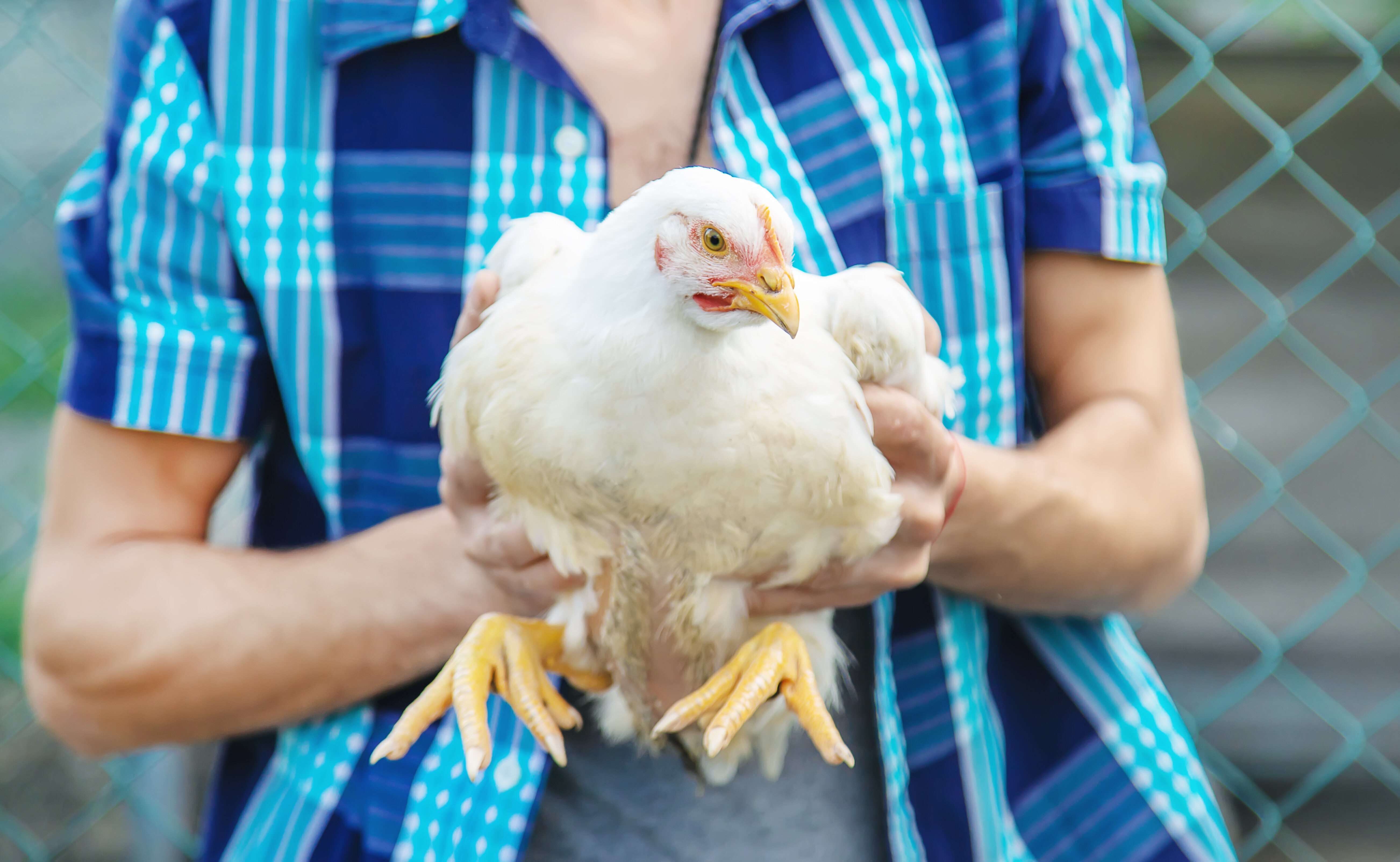Just in time for Veganuary, Netflix released “You Are What You Eat: A Twin Experiment,” a documentary that looks into the health benefits of a vegan diet versus one that includes animal products. In the film, food industry experts describe conditions related to meat and fish production in which people’s homes were sprayed with pig feces from nearby pig farms, farm-raised salmon showed up in stores with deformities and sores, and grocery store chicken meat was crawling with life-threatening bacteria like E.coli and salmonella.

While there’s a lot to unpack in this documentary, chicken seems like an important place to start — the average American eats more than 100 pounds of chicken per year, according to a Vox report. Chicken is also an excellent source of lean protein and is packed with essential B vitamins, zinc, and iron.
For those of us who don’t want to give up chicken (*raises hand*), what can we do to ensure that we’re buying the safest meat possible? We consulted food safety experts and a nutritionist — here’s what they had to say.
1. How much bacteria is lurking on our chicken?

The answer to this question is a startling one, according to Sam Martin, a senior director and food safety expert at Microbac Laboratories. “Approximately 30% of grocery store chicken is contaminated with bacteria,” he told HuffPost. “This number would include salmonella, E. coli, listeria, staphylococcus, and campylobacter.”
Before you completely freak out, cooking the chicken will kill this bacteria, Martin said. The issue is that many people don’t know when their chicken is properly cooked — and he emphasized that the only way to know if chicken is fully cooked is by using a meat thermometer. “You have to ensure that it has reached an internal temperature of 165 degrees Fahrenheit in the thickest part,” he said.
He added that the spread of bacteria has a lot to do with how chicken is processed once it reaches the poultry plant. “The bacteria of concern are either part of the chicken’s intestinal flora or are present on their skin and feathers. The process of de-feathering and evisceration can allow some of that bacteria to get onto the flesh.”
Additional processing steps, like cutting and grinding, can also expose the meat to bacteria. “Processing facility sanitation is critical to keeping the surfaces clean. Most poultry processors perform full chemical sanitation every day, and all of the above is done under USDA inspection,” Martin said.
Dr. Marion Nestle, a molecular biologist who has studied and taught food science for decades and was interviewed in the documentary, told HuffPost that the conditions conventionally-raised chickens are kept in can spread disease. “The bacteria do not make the chickens sick, but they can make eaters sick if the chickens aren’t handled and cooked properly,” she told HuffPost. “Also, because antibiotics are used widely in chicken-raising, the bacteria develop antibiotic resistance, which can make treatment difficult.”
So what can you do to decrease your odds of picking out chicken that could make you sick?
2. Certain labels have little impact on food safety.

First, Nestle emphasizes, be aware of which labels are essentially meaningless. “Natural” has no real meaning, she said.
“Hormone-free” is another meaningless term, as it’s illegal to use hormones in raising chickens, Martin said. “All chicken in the U.S. is, by law, hormone-free. The USDA monitors this,” he said.
“Cage-free” and “free-range” are other terms that can give consumers a feeling of security, but Martin said these terms don’t mean much. “Chickens raised for meat in the U.S. are not held in cages,” Nestle said. “Egg-laying chickens are held in cages, and free-range does not have a standard. Chickens have access to the outdoors, but the time spent and quality of the outdoor space are not monitored.”
Tamar Samuels, a registered dietitian and co-founder and vice president of nutrition startup Culina Health, added that all “free-range” means is that chickens spend at least some amount of time outside per day. “This means that chickens who have access to the outdoors for five minutes per day can be considered ‘free-range,’” Samuels said.
3. But some labels do offer useful information.

The “humanely-raised” label is overseen by a non-profit organization called the Humane Farm Animal Care,” Samuels said. “This organization has comprehensive standards to receive certification, including allowing chickens to participate in their normal behaviors (perching, pecking, roaming, etc.). The Humane Farm Animal Care group also has standards for the ‘pasture-raised’ label, which include the requirement of birds to be raised outdoors year-round and have access to shelter for protection.”
Likewise, the ‘organic’ label is regulated by the USDA. To receive the ‘organic’ label on their chicken products, companies must give chickens access to the outdoors throughout the year. They also must be fed organic feed and can’t be given drugs or antibiotics.
“Animal Welfare Approved” is another label to look for. “This label is regulated by the non-profit group A Greener World and is only given to companies that give chickens continuous outdoor access and do not confine them in small spaces or use feedlots,” Samuels said.
But is humanely raised chicken safer chicken? Generally, yes. “Humanely raised animals must meet specific standards for slaughter and care, including more air ventilation and overcrowding, which leads to fewer opportunities for bacteria to spread,” Samuels said. “That said, contamination occurs at various stages in the manufacturing, transportation, and cooking process, so risk of contamination is still possible, albeit smaller.”
Martin also said an easy chicken safety hack is simply to pick the freshest chicken at the store. “Pick the product with the latest ‘packed on’ or ‘use by’ date,” he said. “Some bacteria can still grow at refrigerated temperatures, albeit more slowly. But choosing chicken that is the ‘freshest’ will give any bacteria that is present less time to multiply, meaning you have less of a bacterial load to worry about.” The same goes for nutrition, he said: pick the freshest product available.
This post originally appeared on HuffPost.
